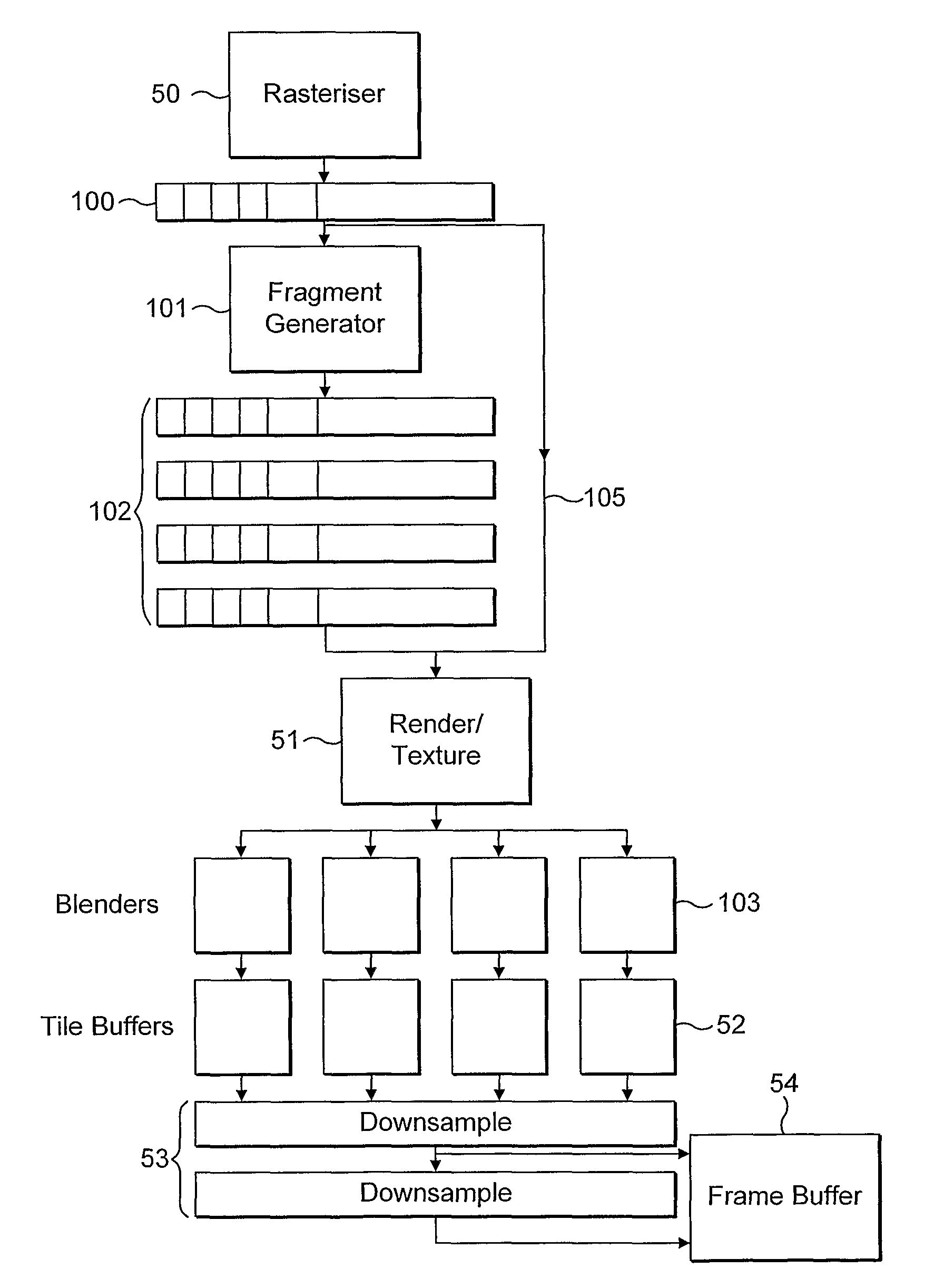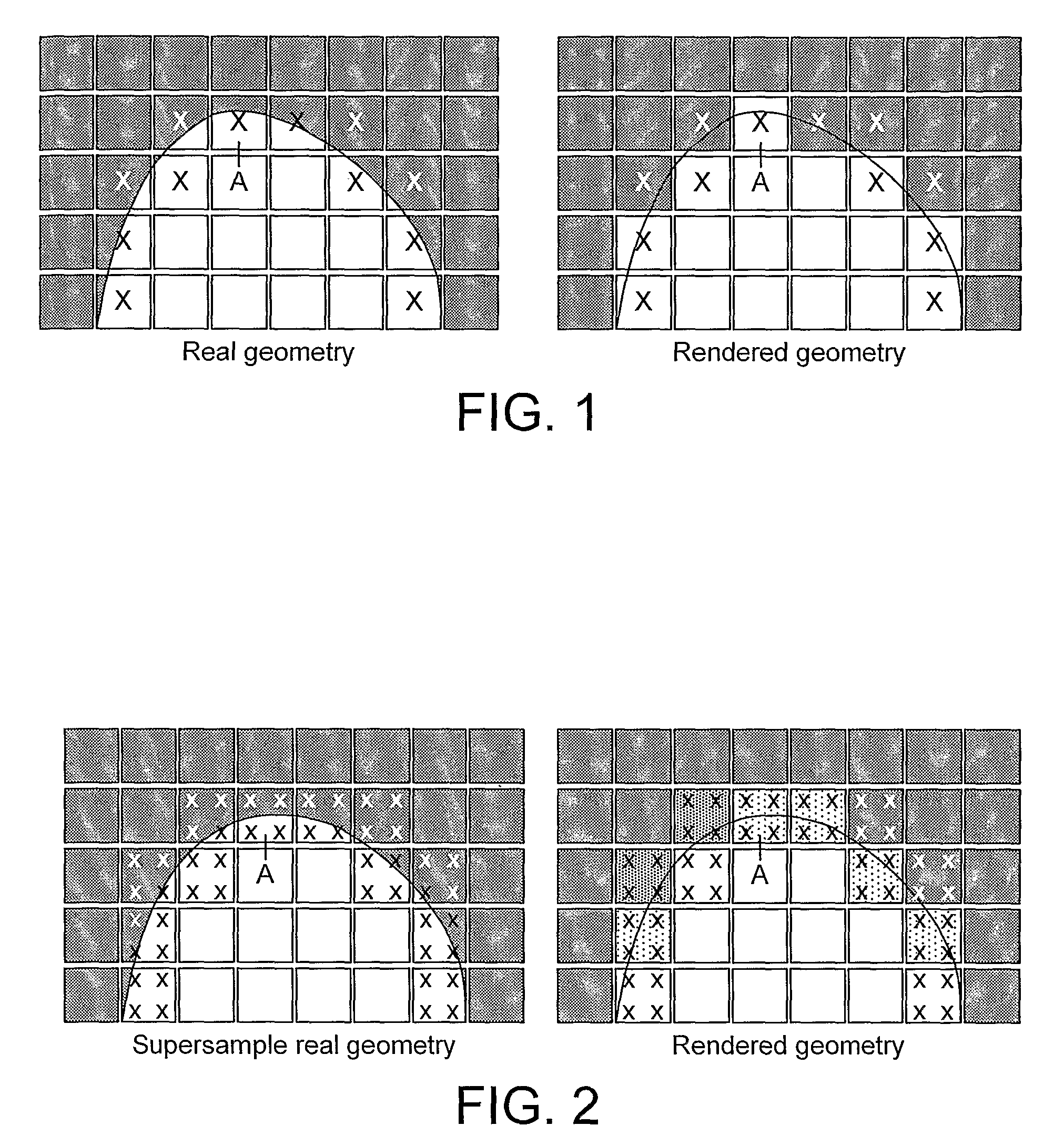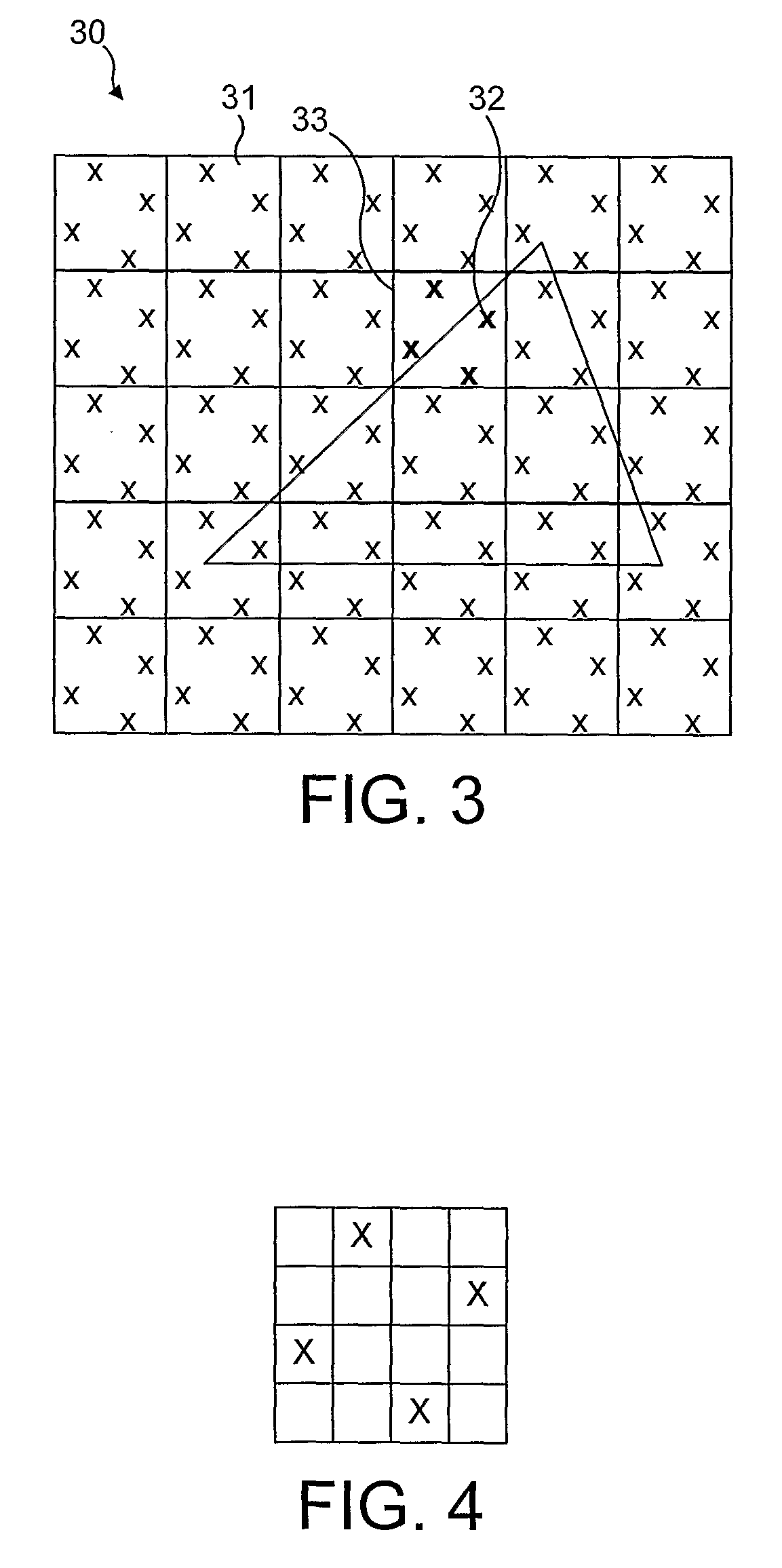Processing of computer graphics
a computer graphics and processing technology, applied in the field of computer graphics, can solve the problems of limiting the resolution of the image that is displayed, producing unwanted visual artifacts, and limiting the resolution of electronic displays and printers, and achieve the effect of effective processing
- Summary
- Abstract
- Description
- Claims
- Application Information
AI Technical Summary
Benefits of technology
Problems solved by technology
Method used
Image
Examples
Embodiment Construction
[0290]A preferred embodiment of the present invention will now be described in the context of processing of 3D graphics for display. However, as will be appreciated by those skilled in the art, the present invention is not limited to the processing of 3D graphics and has other application as well.
[0291]As is known in the art, and as discussed above, when a 3D graphics image is to be displayed, it is usually first defined as a series of primitives (polygons), which primitives are then divided (rasterised) into graphics fragments for graphics rendering in turn. During a normal 3D graphics rendering operation, the renderer will modify the (e.g.) colour (red, green and blue, RGB) and transparency (alpha, a) data associated with each fragment so that the fragments can be displayed correctly. Once the fragments have fully traversed the renderer, then their associated data values are stored in memory, ready for output for display.
[0292]The present invention is particularly concerned with f...
PUM
 Login to View More
Login to View More Abstract
Description
Claims
Application Information
 Login to View More
Login to View More - R&D
- Intellectual Property
- Life Sciences
- Materials
- Tech Scout
- Unparalleled Data Quality
- Higher Quality Content
- 60% Fewer Hallucinations
Browse by: Latest US Patents, China's latest patents, Technical Efficacy Thesaurus, Application Domain, Technology Topic, Popular Technical Reports.
© 2025 PatSnap. All rights reserved.Legal|Privacy policy|Modern Slavery Act Transparency Statement|Sitemap|About US| Contact US: help@patsnap.com



